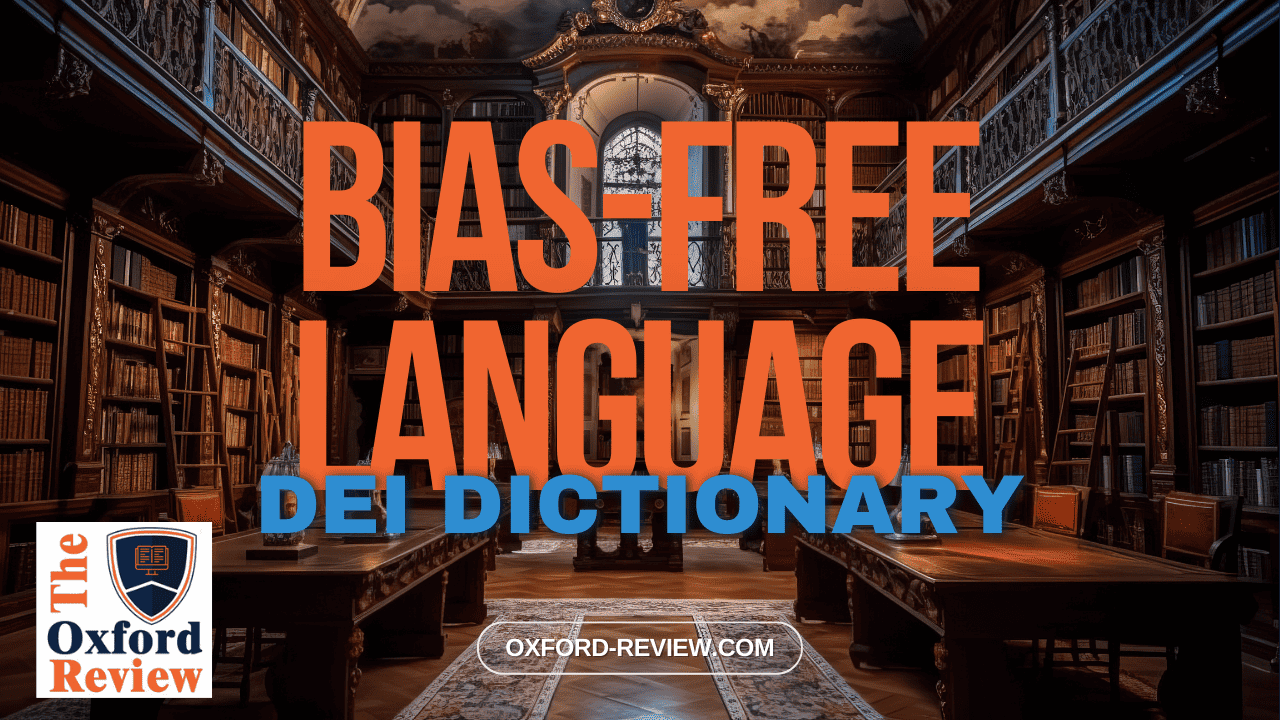Bias-Free Language – Definition and Explanation

Definition:
Bias-free language, also known as inclusive language, refers to words and phrases that are free from prejudices, stereotypes, or discriminatory implications. Employing bias-free language is not only a matter of respect and courtesy but also crucial for promoting diversity, equity, and inclusion (DEI) in all aspects of society.
Why Bias-Free Language Matters:
Using biased language can perpetuate stereotypes, marginalise certain groups, and create barriers to communication and understanding. It can also contribute to feelings of exclusion and discrimination. By adopting bias-free language, individuals and organisations demonstrate their commitment to respecting the dignity and worth of all people, regardless of their race, gender, ethnicity, sexual orientation, or any other characteristic.
Key Principles of Bias-Free Language:
- Avoiding Stereotypes: Refrain from using language that reinforces stereotypes or assumptions about particular groups. For example, instead of referring to a nurse as “she” and a doctor as “he,” use gender-neutral terms like “they” or “the healthcare professional.”
- Using Inclusive Terminology: Choose words and phrases that are inclusive and considerate of diverse identities and experiences. For instance, rather than saying “disabled person,” use “person with a disability” to emphasise the individual first.
- Respecting Cultural Differences: Be mindful of cultural sensitivities and preferences when selecting language. What may be acceptable terminology in one community could be offensive or derogatory in another.
Example:
Consider the phrase “mankind.” While it has been traditionally used to refer to humanity as a whole, it is not gender-neutral. Instead, using “humanity” or “people” removes the gender bias and makes the language more inclusive.
Conclusion:
Incorporating bias-free language into everyday communication is a fundamental step towards creating a more inclusive and equitable society. By embracing diversity and respecting individual differences through our choice of language, we can build stronger relationships, foster mutual understanding, and promote a culture of respect and acceptance for all.
References:
Noble, N., Bradley, L., & Hendricks, B. (2021). Bias-free language: LGBTQ+ clients and the new APA manual. Journal of LGBTQ Issues in Counseling, 15(1), 128-139. https://www.tandfonline.com/doi/abs/10.1080/15538605.2021.1868377
Kaplan, S. M. (2020). A theoretical model for the preparation of an inclusive and bias-free expression dictionary (Doctoral dissertation, Stellenbosch: Stellenbosch University). https://scholar.sun.ac.za/handle/10019.1/107754
Phipps, G. S., Baquet, S. N., Hill, J., Pantoja-Patiño, J., Moh, Y. S., & Jenkins, K. (2023). Words Matter: The 7th Edition APA Publication Manual and Bias-Free Language Use in Counselor Education. Journal of Counselor Preparation and Supervision, 17(2), 4. https://digitalcommons.sacredheart.edu/jcps/vol17/iss2/4/
Be impressively well informed

Get the very latest research intelligence briefings, video research briefings, infographics and more sent direct to you as they are published
Be the most impressively well-informed and up-to-date person around...
